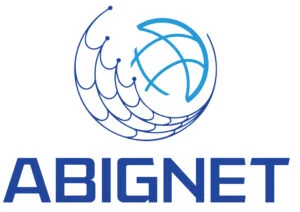The Hidden Threat: How North Korean IT Workers Are Infiltrating U.S. and UK Companies
A new and sophisticated threat is emerging in the world of corporate security, and it doesn’t involve traditional hacking or malware. Instead, it targets the very heart of a company: its hiring process. Highly skilled IT workers from North Korea are using elaborate schemes to fake their identities, securing remote work positions at U.S. and Uk companies, and funneling their wages back to the regime. This isn’t just a compliance issue; it’s a significant national security and economic risk that businesses can no longer afford to ignore.
What Happened: A Deceptive Global Operation
Skilled North Korean technology workers, often operating in teams from outside North Korea, have been systematically creating fake personas to get hired for remote IT jobs. They target a wide range of industries, from technology and finance to retail and media.
Their methods are advanced and difficult to detect. They often assume the identities of legitimate individuals from other countries, using stolen or forged documents. These workers create convincing online profiles on professional networking sites and freelance platforms, complete with detailed work histories and skill endorsements. To pass interviews and technical tests, they may use proxies or have more senior team members manage the screening process. Once hired, they perform the work diligently, making it difficult for employers to suspect any wrongdoing based on performance alone. The primary goal is to generate revenue, which is then sent back to support North Korea’s strategic programs.
How the Scheme Was Uncovered
The discovery of this widespread operation came through the combined efforts of U.S. government agencies, including the FBI and the Department of Justice, alongside private cybersecurity firms. Investigations revealed a pattern of activity that pointed back to state-sponsored groups.
Red flags were raised when financial institutions noticed unusual money transfer patterns, where salaries from U.S. companies were being funneled through complex networks and eventually routed to accounts linked to North Korea. Cybersecurity experts also identified technical indicators, such as specific IP addresses and login behaviors, that connected multiple, seemingly unrelated, remote workers to a single, coordinated group. These findings, combined with intelligence reports, painted a clear picture of an organized, state-directed effort to exploit the global market for remote IT talent.
How to Protect Your Company
Businesses must adapt their security and hiring practices to counter this evolving threat. Relying on standard background checks is no longer enough. Here are actionable steps you can take to safeguard your organization when hiring remote workers.
1. Enhance Identity Verification Processes
Go beyond simply reviewing a resume and a passport copy. Implement multi-layered identity verification during the hiring process. This can include live video interviews where candidates must show their official identification documents. Consider using third-party verification services that specialize in authenticating global identities and cross-referencing documents against international databases.
2. Bolster Technical Screening and Monitoring
During technical interviews, monitor for signs that the person on camera is not the one completing the tasks. Pay attention to background noises, keyboard sounds that don’t match on-screen activity, or delayed responses. Once an employee is hired, monitor login locations and IP addresses for inconsistencies. A developer who claims to be in one country but consistently logs in from another is a major red flag.
3. Train Your HR and Hiring Teams
Your human resources staff and hiring managers are your first line of defense. Provide them with training on the specific tactics used by these groups. Teach them to spot doctored documents, recognize inconsistencies in a candidate’s story, and identify suspicious behavior during remote interviews. An informed team is better equipped to ask the right questions and notice when something is amiss.
4. Collaborate with Cybersecurity Experts
Work closely with your internal or external cybersecurity team to integrate security protocols into the hiring and onboarding process. They can help implement technical safeguards, such as requiring the use of company-issued hardware or secure virtual private networks (VPNs) that can help control and monitor access to your corporate network.
By taking these proactive steps, companies can significantly reduce their risk of unknowingly hiring individuals involved in these illicit schemes. Protecting your company requires a vigilant, multi-faceted approach that combines robust identity verification, technical oversight, and continuous team education.

